Plants & Flowers Poisonous for Humans
There’s no hiding it – we love flowers. The varieties, the colours, scents and shapes, there really is so much to love about flowers. Not to mention how happy and valued your nearest and dearest feel when they receive a stunning bouquet of their favourite flowers. We’re not sure there’s a more perfect gift for all occasions; available at short notice, hand-created and hand-delivered for the special recipient and bring such joy for any reason or gesture.
But we’re not here to talk today about why you should send flowers, we would be here all day if we were. We’re here today for more of a public service announcement (PSA). Our aim is for it to be easier than ever to make your friends, family, colleagues and loved ones feel happy, noticed and remembered. Part of this is making sure everyone takes care of one another, for this is what really makes the world go round, care, humility and kindness.
While flowers as a whole are some of the most beautiful sights to behold on our planet, there are a number of poisonous flowers and plants that should be treated with a little caution and there are some flowers that can pose a serious threat to our welfare and even the welfare of our beloved pets. From minor headaches and skin irritations to serious convulsions and even death, we’re here to advise about the potential dangers of some flowers and what to look out for to make sure no one close to you comes to any harm.
We do recommend seeking professional medical help in the instance of any prolonged, painful or abnormal reaction to any flower, plant or tree. We’re doing our best to keep you informed, but our guide should be referred to for information only.
Hydrangea
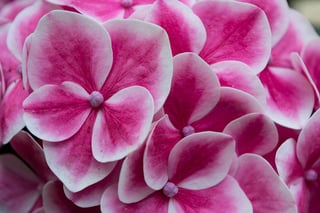
A stunning stem that sometimes resembles a cheerleader’s pom-pom, the hydrangea is available all year round, though they are most commonly found in the spring months. While hydrangea may somewhat resemble candy-floss, at up to 15 feet tall it should be difficult enough to consume these poisonous flowers. However symptoms can range from an uncomfortable stomach ache a few hours after eating, to itchiness, vomiting and nausea, weakness and feverish symptoms such as a raised temperature and sweating. Treatment is available from most pharmacies, though it may require a prescription depending on localities.
Foxglove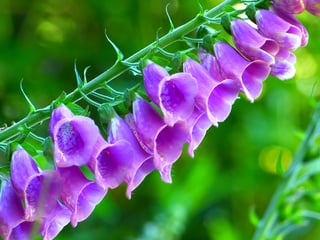 Also known as rabbit flower, fairy bells or throatwort, foxglove is more commonly found in wild environments such as woodland and meadows alongside hedgerows. It is most commonly found in pink, purple and white around the summer months, growing up to 3 feet tall.
Also known as rabbit flower, fairy bells or throatwort, foxglove is more commonly found in wild environments such as woodland and meadows alongside hedgerows. It is most commonly found in pink, purple and white around the summer months, growing up to 3 feet tall.
Similar to the hydrangea, this poisonous flower may cause nausea and vomiting, alongside cramps, diarrhoea and mouth pains. Treatment may include coal to absorb as much of the toxins as possible, or in really bad scenarios a stomach pump may be used to completely flush out any remaining poisons.
Chrysanthemum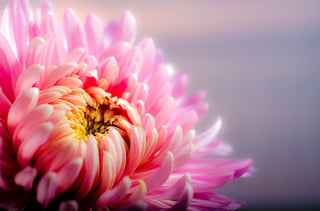 Perhaps not the first flower that sprung to your mind when you thought of poisonous flowers and plants, however it’s good to be aware of the potential minor irritations that can come from chrysanthemums.
Perhaps not the first flower that sprung to your mind when you thought of poisonous flowers and plants, however it’s good to be aware of the potential minor irritations that can come from chrysanthemums.
They are often planted in flower beds to deter rabbits and other wildlife from eating any flower displays but contact with most varieties of chrysanthemum can cause rashes, itchiness and a bit of inflammation. Treatment of this is quite simple, a regular antihistamine and ibuprofen to take care of any swelling ought to do the trick.
Lily of the Valley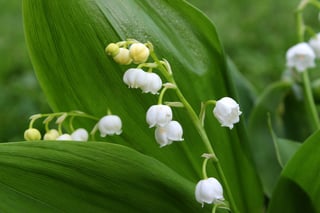 Perhaps the most famous of the poisonous flowers and plants, though the effects of this plant may have been somewhat overstated in films and TV shows, we still don’t recommend taking the chance.
Perhaps the most famous of the poisonous flowers and plants, though the effects of this plant may have been somewhat overstated in films and TV shows, we still don’t recommend taking the chance.
A beautiful flower nonetheless, it is a flower that you won’t find all too often in your local flower shop, partly due to the difficulty to regularly source such a flower but partly due to the problems it can cause if ingested. This particularly applies to pets and small babies.
Every part of the lily of the valley is poisonous. From the tips of the pure-white bells to the stem leaves and the ground they grow in to a degree, ingestion of this poisonous stem can cause serious nausea, vomiting, oral pains and abdominal pains. Not to mention very painful cramps, diarrhoea and a slow or irregular heartbeat. Again, a very beautiful flower, but incredibly dangerous so we do recommend you exercise extreme caution when handling, admiring or buying this flower.
Anthurium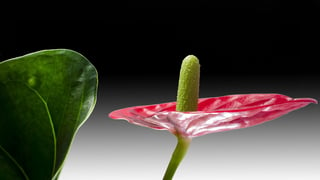 By far one of the more exotic flowers on this list, the anthurium is a stem you’d vary rarely come across in their natural environment. In recent years, the more exotic flower arrangements and tropical flower stems have increased hugely in popularity and so it is more than possible these days to come across an anthurium plant indoors or in an arrangement of flowers at your friend’s house.
By far one of the more exotic flowers on this list, the anthurium is a stem you’d vary rarely come across in their natural environment. In recent years, the more exotic flower arrangements and tropical flower stems have increased hugely in popularity and so it is more than possible these days to come across an anthurium plant indoors or in an arrangement of flowers at your friend’s house.
The symptoms are fairly localised, blistering and swelling in the mouth accompany a burning sensation. It’s by no means life-threatening unless consumed in huge quantities and the symptoms will pass with time, however you can alleviate the symptoms with cool liquids and appropriate painkillers. Some suggest that liquorice can often help minimise symptoms such as these.
Narcissus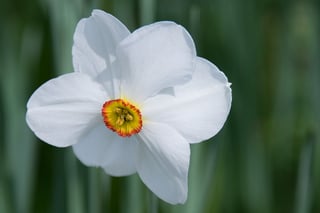 We’ve written a lot about the daffodil, or narcissus, as the undoubted Queen of spring. Though it would be unusual to consume narcissus’, it can cause many similar symptoms to the above flowers; nausea, vomiting, cramps and diarrhoea. Treatment can include intravenous hydration and medication to minimise the effects of the nausea.
We’ve written a lot about the daffodil, or narcissus, as the undoubted Queen of spring. Though it would be unusual to consume narcissus’, it can cause many similar symptoms to the above flowers; nausea, vomiting, cramps and diarrhoea. Treatment can include intravenous hydration and medication to minimise the effects of the nausea.
Ranunculus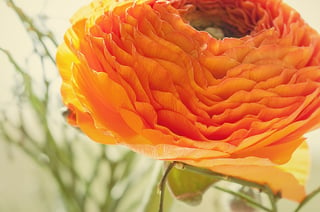 This may come as somewhat of a surprise, buttercups – the little yellow flowers children would hold to their chin to reflect a yellow light, are a member of the ranunculus family. There are of course hundreds of flowers that are classified within the ranunculus family and they are quite a seasonal stem, but there have been many cases of cattle, horses and livestock eating ranunculus and suffering a range of symptoms. Partly due to their horrible taste and subsequent blistering, the consumption of ranunculus doesn’t last long, however anything so brightly coloured and visually attractive can be a potential hazard for young children.
This may come as somewhat of a surprise, buttercups – the little yellow flowers children would hold to their chin to reflect a yellow light, are a member of the ranunculus family. There are of course hundreds of flowers that are classified within the ranunculus family and they are quite a seasonal stem, but there have been many cases of cattle, horses and livestock eating ranunculus and suffering a range of symptoms. Partly due to their horrible taste and subsequent blistering, the consumption of ranunculus doesn’t last long, however anything so brightly coloured and visually attractive can be a potential hazard for young children.
Rhododendron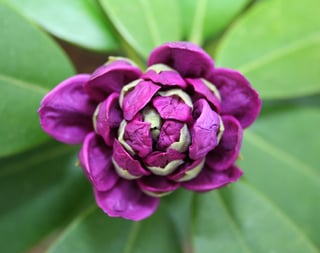 For most readers this may be the most likely flower in our guide to come across at least fairly regularly. Popular in many household garden flower arrangements, the rhododendron genus extends to familiar plants such as azaleas and are some of the most beautiful plants out there.
For most readers this may be the most likely flower in our guide to come across at least fairly regularly. Popular in many household garden flower arrangements, the rhododendron genus extends to familiar plants such as azaleas and are some of the most beautiful plants out there.
However this poisonous flower ought to be handled with a degree of care, due more to its availability and the likelihood of any issues than the severity of any issues. There has been stories about people falling ill after eating honey made by bees that have been feeding on rhododendron and azalea flowers. Bringing a mild hallucinogenic effect and a less mild laxative effect, it was credited with contributing to the defeat of a number of armies in 67 B.C. after the soldiers had consumed the honey without realising where the bees were pollinating.
Headaches, weakness and narrowing vision may come alongside vomiting, diarrhoea and tingling sensation in the skin. Following this, your heart rate could slow down or adopt a strange beat, known as arrhythmia and serious cases may result in coma and even fatal convulsions. In any instance of ingestion, seek medical help immediately and the symptoms can be managed and often avoided altogether.
Hemlock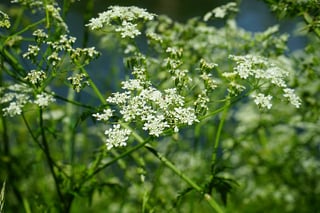 While you are unlikely to encounter Poison Hemlock on a day to day basis, it is worth a spot on this list due to the severe symptoms it presents, that affect the transmission of nerve impulses to muscle.. There have been many cases of death associated with Poison Hemlock, but it also used in homeopathic remedies in extremely small doses. While we do not recommend preparing hemlock yourself, it has been used to treat anxiety and epilepsy.
While you are unlikely to encounter Poison Hemlock on a day to day basis, it is worth a spot on this list due to the severe symptoms it presents, that affect the transmission of nerve impulses to muscle.. There have been many cases of death associated with Poison Hemlock, but it also used in homeopathic remedies in extremely small doses. While we do not recommend preparing hemlock yourself, it has been used to treat anxiety and epilepsy.
The reason this plant has caused so many deaths is its similarity to several edible plants – The roots look like parsnips, the leaves like Parsley and the seeds like Anise. The poisons in Hemlock ae so deadly, that people have died from eating birds that had eaten the seeds of the plant.
Mistletoe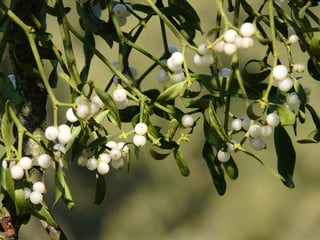 During the festive season you will see Mistletoe everywhere, so it may come as a surprise that this plant makes our list. While used to liven up most offices and work places over the month of December, the berries are highly toxic and have proved fatal to both adults and children, meaning they have very high toxic content. So next time you step under the mistletoe, be sure not to go near the berries. Usually these will be removed if store bought, but if they are hand picked they may still be present.
During the festive season you will see Mistletoe everywhere, so it may come as a surprise that this plant makes our list. While used to liven up most offices and work places over the month of December, the berries are highly toxic and have proved fatal to both adults and children, meaning they have very high toxic content. So next time you step under the mistletoe, be sure not to go near the berries. Usually these will be removed if store bought, but if they are hand picked they may still be present.
Stinging Nettles 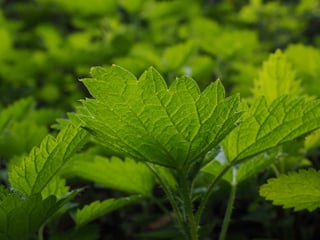 While not deadly, stinging nettles rightly earn a spot on our list due to how many people have been affected by them throughout their lives. I remember a shortcut that would always result in very sore legs for a little while. Stinging nettles are another plant that are used regularly in homeopathic medicines and have been for centuries. The coarse hairs on the leaves and stem of the stinging nettles acts as an irritant when in contact with bare skin causing a slight rash and itching sensation. Luckily there is a natural remedy for stinging nettles, Rumix which is more commonly known as docks, grow in the same habitats as nettles and the leaves of docks can be used to reduce the itching and rash.
While not deadly, stinging nettles rightly earn a spot on our list due to how many people have been affected by them throughout their lives. I remember a shortcut that would always result in very sore legs for a little while. Stinging nettles are another plant that are used regularly in homeopathic medicines and have been for centuries. The coarse hairs on the leaves and stem of the stinging nettles acts as an irritant when in contact with bare skin causing a slight rash and itching sensation. Luckily there is a natural remedy for stinging nettles, Rumix which is more commonly known as docks, grow in the same habitats as nettles and the leaves of docks can be used to reduce the itching and rash.
A Little knowledge goes a long way when it comes to poisonous plants, so unless you are 100% sure of what you are doing, we would never recommend eating any parts of a plant that you do not know is safe. Flowers and plants are used for so many things, from decorations to medicine, but just remember while they are beautiful, they can also be deadly.





